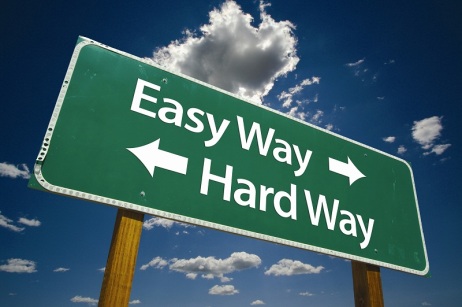Be simple. But effective.
10 Jun 2016

The Airbus A380 is a marvel. A feat of engineering, a flight to the future.
Each plane consists of four million individual components, carries 500km of electric cable and, despite being an aerial behemoth, the A380 makes half the noise of a Boeing 747 on take-off.
Total and utter genius.
Yet amongst platforms of cutting edge AI, a building process powered by giant computers and with an army of robots at their disposal, there is one challenge that demands Skynet and the gang take a step back.

When it comes to securing the 23,000 bolts that lock the plane’s parts together, Airbus hand real human beings wrenching guns. No Terminator-headed robots here. Just a simple solution that came about because – you know what? – it was the best way to get the job done.
So what’s this got to do with copywriting? Well, copywriters will often run a mile from the simple solution. Despite the fact, as we see with the Airbus example, that simple often works best.
I recently read a piece from The Drum’s Andrew Boulton that took a sharp look at this oddly taboo subject – the copywriter’s fear of picking the simple over the strenuous.
Could it be, he says, trust issues? Are we hardwired to seek out the most creative, mind-bending gaggle of words when, sat just in front of us, Mr & Mrs Straight Forward are clamouring for our attention?

Thing is, there is brilliance in the simple. And out there in copy land there are lots of examples of simplicity in action.
Few campaigns, though, epitomise the triumph of seemingly unremarkable copy quite like Ronseal.
Ronseal manufacture wood stain, paint and preservatives. We’re not talking jazzy products here – no one gets hot under the collar about coating a fence, right? – so how to make people care? A good place to start is with work like this:
You may recognise the line: “Does exactly what it says on the tin”.
Simple. Boring, even. Where’s the bang? The get-me-out-of-my-seat moment? The humour, the emotion?
But let’s go back a little further and discover the challenge that confronted Ronseal and their agency partners at HHCL.
Insights had shown that, once in a DIY store looking for wood sealant and varnishing products, customers felt out of their depth and confused at what was on offer. The task at hand was clear: demystify the buying process around the product.
So HHCL created a vision of the average Ronseal consumer: someone with wood to stain, they needed that wood to dry rapidly and the solution was Ronseal with their quick-drying wood stain product.
The world then built featured a straight-talking TV script that took a “do this to do that and get these results” approach.
And the famous “Does exactly what it says on the tin” line actually started life as an endline in that process. An endline that over time entered everyday language and found a home in the Oxford Dictionary of Idioms.
A fine example why we should listen when Jerry Seinfeld says, “Maybe the road less travelled is less travelled for a reason.” Could it be that sometimes the simple stuff is the best stuff of all?